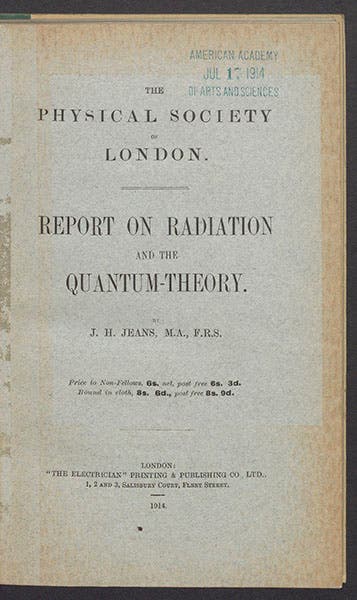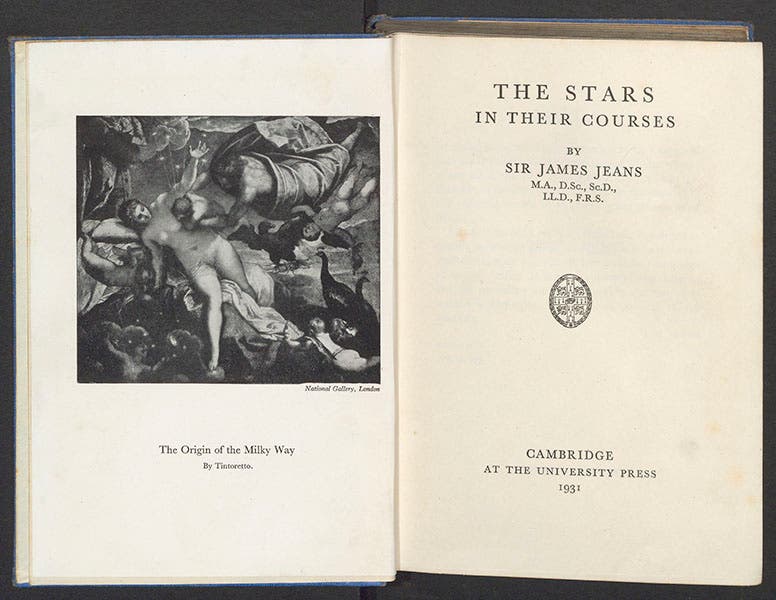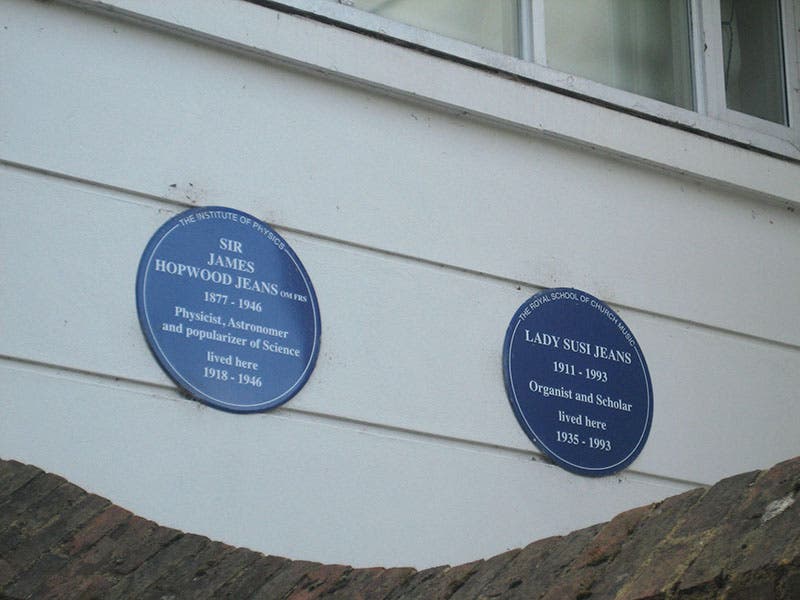Scientist of the Day - James Hopwood Jeans
James Hopwood Jeans, a British mathematician, physicist and astronomer, was born Sep. 11, 1877. In the 1910s and 1920s, Jeans played a major role in applying quantum theory to astrophysics and developing sophisticated mathematical models of the behavior of gases in condensed states, i.e., stars (second image). However, Jeans had a series of rancorous disputes with the other Cambridge doyen of stellar structure, Arthur Eddington, and after one unpleasant confrontation in 1929, Jeans simply abandoned astrophysics and turned to writing popular books on astronomy and cosmology for the educated public.
Two of his books, The Universe around Us (1929; third image), and The Mysterious Universe (1930), were best-sellers, and he went on to write numerous others, including The Stars in Their Courses (1931; fifth image). He shrewdly included the latest and best photographs of deep-sky objects, such as the photograph taken at Mt. Wilson Observatory of the Trifid nebula (fourth image). Jeans had a knack for finding ways to get his lay readers to relate to the scale of things (“Put three grains of sand inside a vast cathedral, and the cathedral will be more closely packed with sand than space is with stars”). His public does not seem to have been put off by Jeans’ conclusion that the Creator of all things was a mathematician, pure and simple.
Jeans was also profoundly interested in music – not just the physics of music (about which he wrote a masterful book, Science and Music, 1937), but performance as well. He was a more than competent organist, mastering the complete organ repertoire of J.S. Bach, and installing a three-manual organ in his house in Dorking in Surrey, south of London. In 1935, Jeans was introduced to Suzanne Hock, a Viennese concert organist who was travelling the world, trying to build interest in playing Bach and Handel on period organs – this was long before there was any interest among musicians in playing on period instruments. The two were married before the year was out, Suzanne Hock becoming Lady Susi Jeans. The next year, Sir James had a Baroque-style organ installed in Susi’s end of the house, the first period organ built in England in the 20th century. Both organ halls were carefully soundproofed so that the two could play at the same time and not bother each other.
Susi outlived her husband by 47 years and made Cleveland House a center for the baroque organ revival movement. There survives a charming photograph of James, Susi, and their first-born child (sixth image). And if you travel to Cleveland Lodge in Surrey, you will see on the outside of the house, not just one of the ubiquitous British blue plaques, but two – one for Sir James, and one for Lady Susi (seventh image).
The caricature of Jeans (first image) was drawn by notable British caricaturist Powys Evans after Jeans’ second successful book; it is inscribed on the back “James Jeans and the Mysterious Universe” and is signed by the artist. You can find it in the National Portrait Gallery, London. So far as I can determine, Evans (pen-name: Quiz), drew no other scientists, but his caricature of George Bernard Shaw is a treasure. Dr. William B. Ashworth, Jr., Consultant for the History of Science, Linda Hall Library and Associate Professor emeritus, Department of History, University of Missouri-Kansas City. Comments or corrections are welcome; please direct to ashworthw@umkc.edu.











